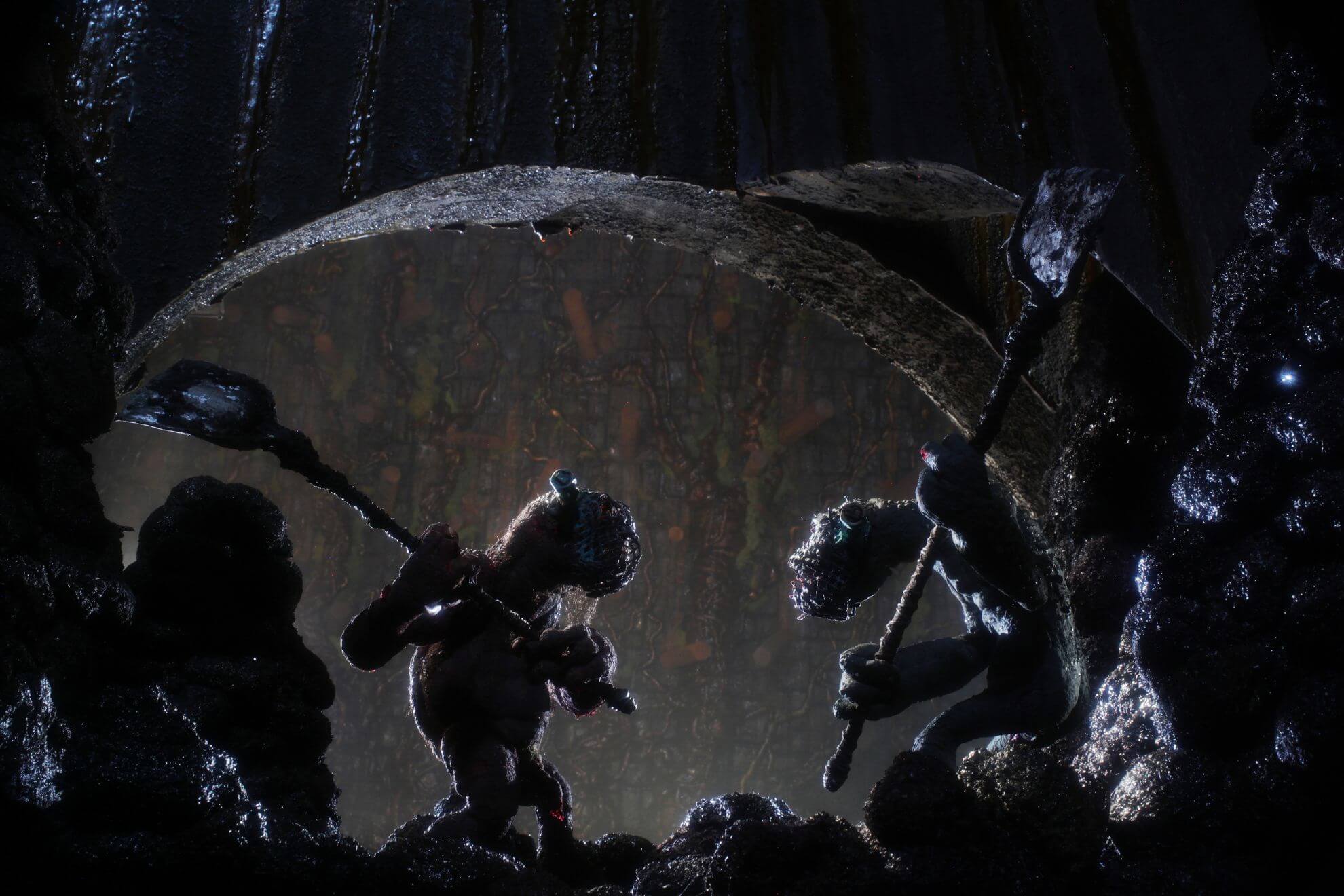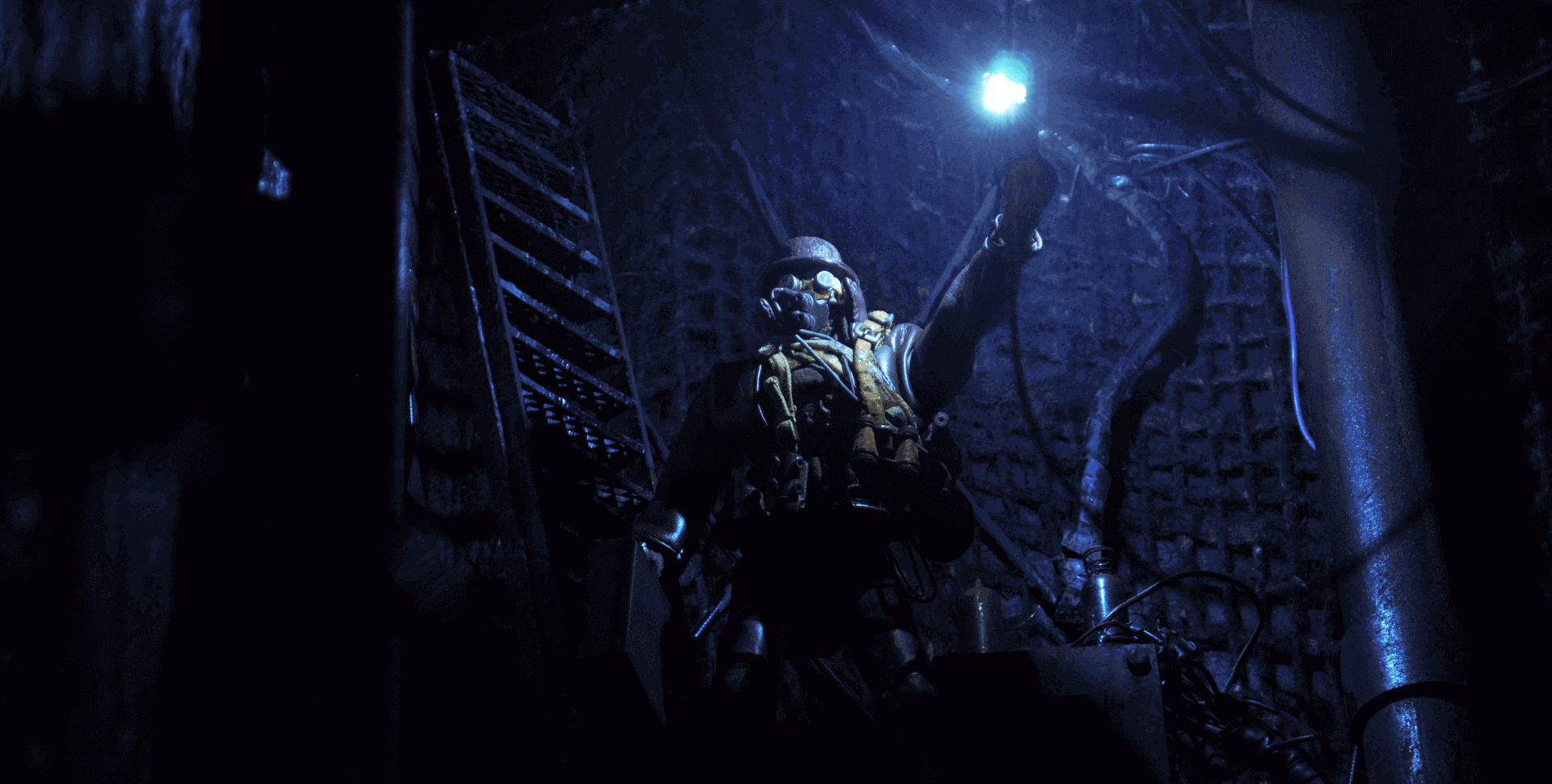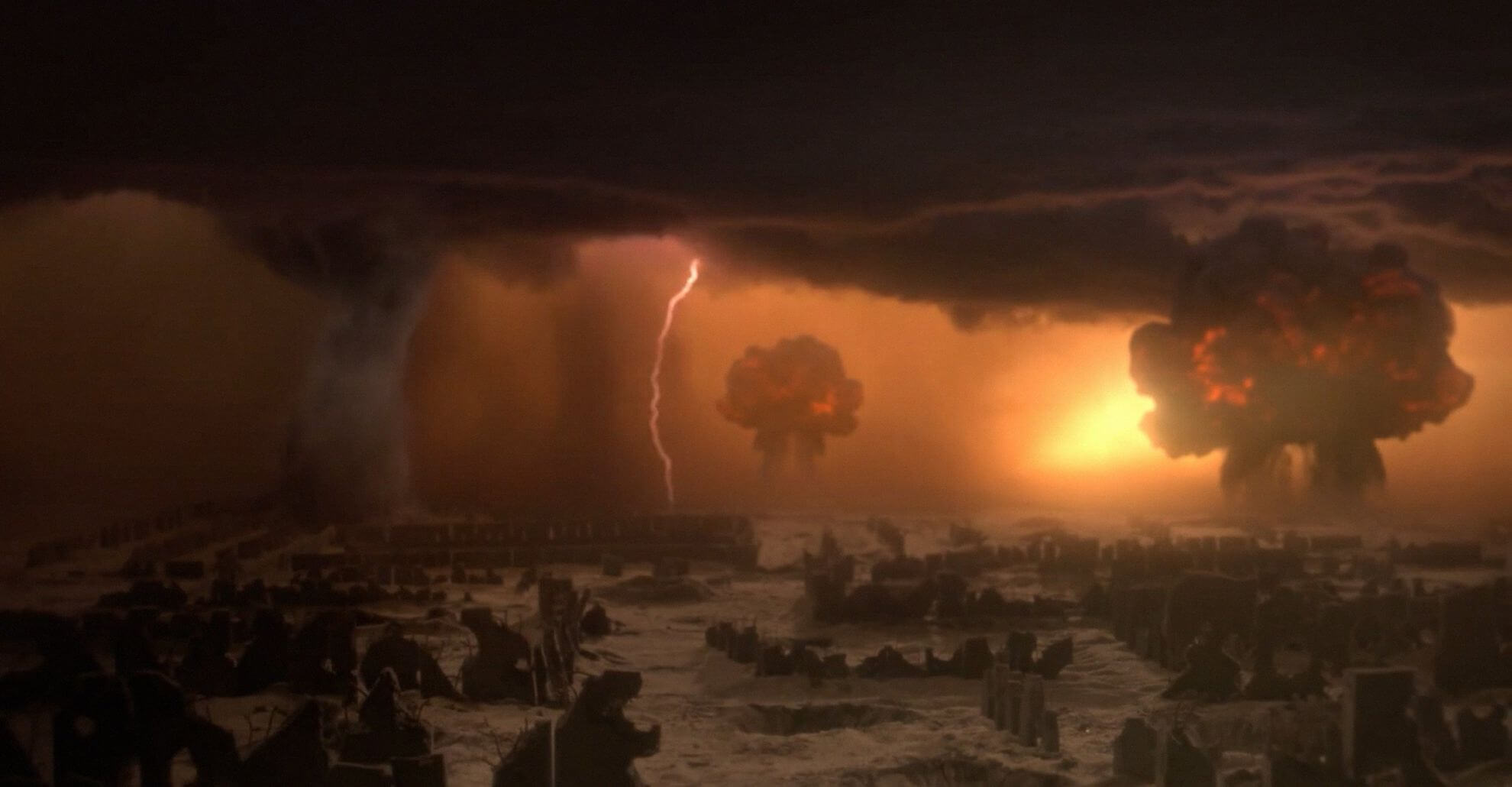Phil Tippett's Mad God is a testament to the power of effort. With passion projects, no matter how little progress is made day to day either thirty months or thirty years — given enough dedication — you can create an art piece that is uncompromisingly a reflection of the self. What's more, is that there is a whole audience of people out there who would want to see it.

Never-Ending Texture: To call Mad God a visual accomplishment is selling it short. All manner of visual effects are used in accomplishing the increasingly complicated shots, from stop motion to screen projection, 3D animation to multiple live-action sequences — the film is a veritable Frankenstein's monster, stitched together in visible ways, but ultimately the point. It intends to be nearly as inhuman as possible. If you could grab handfuls of garbage and stack them on top of each other, shaping and molding them into something grotesque and anew, visually, it's something like the many of the environments featured in the film. The only portion that is even mildly familiar is its opening moments take place above ground near a WWI-influenced battlefield, as the film's main character is slowly lowered into the confusing chasm below. The hook-and-line visual design recalls something as innocuous as Spongebob Squarepants while drawing a smorgasbord of influences during its near-silent, nearly ten-minute descent of an intro. The fact that everything you see had to have been hand-made lends the film creative liberty not often seen in other animated films. The entire piece being shot over the course of three decades must have heavily weighed into the design choices — as the revolving door of volunteers and Phil Tippett's aging means taste would have been continually evolving. This is a film to be *seen*, more than anything, as the longer it goes on, the more its abstract nature becomes the point. It reminds me of the probable inevitability that we won't even be able to comprehend the nature of extra-terrestrial life should humanity be lucky enough to encounter it.

Never-Ending Silence: For as visually interesting as Mad God is, its nature implies that the narrative had to take a backseat. It almost ceases to become a narrative entirely. I'd respect and appreciate films that dare to be silent for long periods, as truly visual storytelling is something of a rare treat. Unfortunately, Mad God struggled to keep my attention. I found the live-action sequences cheapening the experience as what was alien before becomes more recognizable and is set in slightly-uninspired dark asylum/mad hospital operating rooms. It's an aesthetic that I have had too much of, so the viewer's mileage may vary. There are a lot of directorial choices concerning the film's pacing that are form-pushing in nature, but you get the sense that the film is shambling along to make a feature-length run-time through multiple standalone sequences until it comes time to end things. It would be unfair to say this beleaguered project could've been better if it focused less on run-time and more on crafting a satisfying throughline. No shot in the film is a small task, but the effect runs into diminishing returns around halfway through.
Mad God could be a reference to creator Phil Tippett's dedication to this once-in-a-lifetime art project — this is a film worth seeing and worth remembering.

Watch Mad God Now
